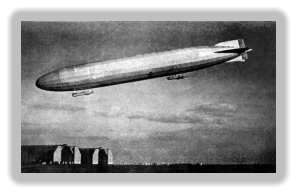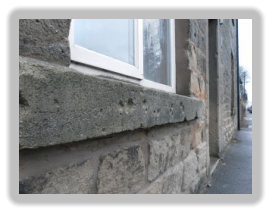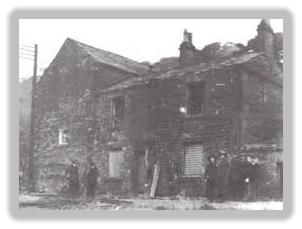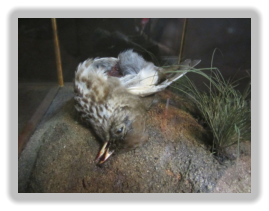
Zeppelin Raid







By today’s standards of drones and supersonic aerial warfare, Germany’s First World War Zeppelins were cumbersome and fragile.
Yet they struck fear among terrified Britons, with their indiscriminate
First World War Zeppelins were cumbersome and fragile.
Yet they struck fear among terrified Britons, with their indiscriminate bombing raids.
Holcombe felt the might of these “cigar-shaped engines of death” – or
bombing raids.
Holcombe felt the might of these “cigar-shaped engines of death” – or “baby killers” as they were also called - on the night of September 25,
“baby killers” as they were also called - on the night of September 25, 1916.
Zeppelin LZ61, tactical number L21, commanded by 29-year-old
1916.
Zeppelin LZ61, tactical number L21, commanded by 29-year-old Oberleutnant Kurt Frankenburg, flew over the village after dropping bombs
Oberleutnant Kurt Frankenburg, flew over the village after dropping bombs in the Rossendale Valley, damaging buildings in Bacup and Rawtenstall but
in the Rossendale Valley, damaging buildings in Bacup and Rawtenstall but inflicting no casualties.
Its bombs were loosed on Holcombe within a radius of 500 yards. One landed
inflicting no casualties.
Its bombs were loosed on Holcombe within a radius of 500 yards. One landed on pasture land before a larger device fell in the main road between the
on pasture land before a larger device fell in the main road between the Shoulder of Mutton, then a farm and country inn, and what was then the
Shoulder of Mutton, then a farm and country inn, and what was then the Post Office, opposite the car park.
Twenty of the pub’s windows were shattered and the front door was broken
Post Office, opposite the car park.
Twenty of the pub’s windows were shattered and the front door was broken in half. The house opposite suffered major damage and shrapnel
in half. The house opposite suffered major damage and shrapnel indentations can still be seen on the stone window lintels.
indentations can still be seen on the stone window lintels. A further bomb was
A further bomb was dropped on Holcombe
dropped on Holcombe School, severely damaging
School, severely damaging the building. The blast
the building. The blast also stopped the church
also stopped the church clock and smashed
clock and smashed windows. The next device destroyed a hen run and a wall and the last
windows. The next device destroyed a hen run and a wall and the last bomb fell in a field at Helmshore.
bomb fell in a field at Helmshore. Mercifully there were no casualties . . . except for a thrush which was
Mercifully there were no casualties . . . except for a thrush which was later preserved in a glass case at Holcombe School.
later preserved in a glass case at Holcombe School. The Zeppelin then headed
The Zeppelin then headed over Ramsbottom,
over Ramsbottom, dropping two bombs. One
dropping two bombs. One landed in Regent Street,
landed in Regent Street, wrecking machinery and lorries at a mineral works, the other blew a crater
wrecking machinery and lorries at a mineral works, the other blew a crater in a field between Victoria Street and Tanners Street.
L21 then flew over Greenmount, dropping two incendiary bombs. One
in a field between Victoria Street and Tanners Street.
L21 then flew over Greenmount, dropping two incendiary bombs. One landed harmlessly but the second went through the roof of a cottage on
landed harmlessly but the second went through the roof of a cottage on Holcombe Road, starting a fierce fire. The family escaped unharmed as
Holcombe Road, starting a fierce fire. The family escaped unharmed as neighbours fought the flames.
Oberleutnant Frankenburg and his crew next headed towards Bolton,
neighbours fought the flames.
Oberleutnant Frankenburg and his crew next headed towards Bolton, where, in a final deadly flourish, they blitzed the town centre with five
where, in a final deadly flourish, they blitzed the town centre with five bombs, killing thirteen people and seriously injuring nine more.
bombs, killing thirteen people and seriously injuring nine more. The airship then passed over Blackburn and then headed for the coast passing near Whitby after dropping one last bomb at
The airship then passed over Blackburn and then headed for the coast passing near Whitby after dropping one last bomb at Bolton Abbey.
Two months later, following another raid, Frankenburger’s airship was shot down off Lowestoft on its way back to
Bolton Abbey.
Two months later, following another raid, Frankenburger’s airship was shot down off Lowestoft on its way back to Germany. All crewmen perished and the 180-metre L21 disappeared into the sea.
Ironically, the airship’s foray to the North West may have been brought about either by mistake or bad navigating.
Germany. All crewmen perished and the 180-metre L21 disappeared into the sea.
Ironically, the airship’s foray to the North West may have been brought about either by mistake or bad navigating. Zeppelins carried no guidance systems so raids were often hit and miss. In January 1916 it had been ordered to bomb
Zeppelins carried no guidance systems so raids were often hit and miss. In January 1916 it had been ordered to bomb Liverpool, but instead targeted Wednesbury and Walsall in the West Midlands.
Its next raid should have been on the factories of Derby, but navigation and engine problems brought it over Cleethorpes,
Liverpool, but instead targeted Wednesbury and Walsall in the West Midlands.
Its next raid should have been on the factories of Derby, but navigation and engine problems brought it over Cleethorpes, where bombs were dropped.
where bombs were dropped. On the night of the Holcombe attack seven months later its intended targets were believed to be foundries in the
On the night of the Holcombe attack seven months later its intended targets were believed to be foundries in the Midlands.
The Holcombe website acknowledges Peter J C Smith’s book Zeppelins Over Lancashire, published by Neil Richardson 1n
Midlands.
The Holcombe website acknowledges Peter J C Smith’s book Zeppelins Over Lancashire, published by Neil Richardson 1n 1991, and an article on the Florida Standard website. See link:
1991, and an article on the Florida Standard website. See link: http://www.thefloridastandard.com/2014/01/19/the-story-of-zeppelin-l21/#sthash.TpyoggPp.dpuf
http://www.thefloridastandard.com/2014/01/19/the-story-of-zeppelin-l21/#sthash.TpyoggPp.dpuf
 First World War Zeppelins were cumbersome and fragile.
Yet they struck fear among terrified Britons, with their indiscriminate
First World War Zeppelins were cumbersome and fragile.
Yet they struck fear among terrified Britons, with their indiscriminate bombing raids.
Holcombe felt the might of these “cigar-shaped engines of death” – or
bombing raids.
Holcombe felt the might of these “cigar-shaped engines of death” – or “baby killers” as they were also called - on the night of September 25,
“baby killers” as they were also called - on the night of September 25, 1916.
Zeppelin LZ61, tactical number L21, commanded by 29-year-old
1916.
Zeppelin LZ61, tactical number L21, commanded by 29-year-old Oberleutnant Kurt Frankenburg, flew over the village after dropping bombs
Oberleutnant Kurt Frankenburg, flew over the village after dropping bombs in the Rossendale Valley, damaging buildings in Bacup and Rawtenstall but
in the Rossendale Valley, damaging buildings in Bacup and Rawtenstall but inflicting no casualties.
Its bombs were loosed on Holcombe within a radius of 500 yards. One landed
inflicting no casualties.
Its bombs were loosed on Holcombe within a radius of 500 yards. One landed on pasture land before a larger device fell in the main road between the
on pasture land before a larger device fell in the main road between the Shoulder of Mutton, then a farm and country inn, and what was then the
Shoulder of Mutton, then a farm and country inn, and what was then the Post Office, opposite the car park.
Twenty of the pub’s windows were shattered and the front door was broken
Post Office, opposite the car park.
Twenty of the pub’s windows were shattered and the front door was broken in half. The house opposite suffered major damage and shrapnel
in half. The house opposite suffered major damage and shrapnel indentations can still be seen on the stone window lintels.
indentations can still be seen on the stone window lintels. A further bomb was
A further bomb was dropped on Holcombe
dropped on Holcombe School, severely damaging
School, severely damaging the building. The blast
the building. The blast also stopped the church
also stopped the church clock and smashed
clock and smashed windows. The next device destroyed a hen run and a wall and the last
windows. The next device destroyed a hen run and a wall and the last bomb fell in a field at Helmshore.
bomb fell in a field at Helmshore. Mercifully there were no casualties . . . except for a thrush which was
Mercifully there were no casualties . . . except for a thrush which was later preserved in a glass case at Holcombe School.
later preserved in a glass case at Holcombe School. The Zeppelin then headed
The Zeppelin then headed over Ramsbottom,
over Ramsbottom, dropping two bombs. One
dropping two bombs. One landed in Regent Street,
landed in Regent Street, wrecking machinery and lorries at a mineral works, the other blew a crater
wrecking machinery and lorries at a mineral works, the other blew a crater in a field between Victoria Street and Tanners Street.
L21 then flew over Greenmount, dropping two incendiary bombs. One
in a field between Victoria Street and Tanners Street.
L21 then flew over Greenmount, dropping two incendiary bombs. One landed harmlessly but the second went through the roof of a cottage on
landed harmlessly but the second went through the roof of a cottage on Holcombe Road, starting a fierce fire. The family escaped unharmed as
Holcombe Road, starting a fierce fire. The family escaped unharmed as neighbours fought the flames.
Oberleutnant Frankenburg and his crew next headed towards Bolton,
neighbours fought the flames.
Oberleutnant Frankenburg and his crew next headed towards Bolton, where, in a final deadly flourish, they blitzed the town centre with five
where, in a final deadly flourish, they blitzed the town centre with five bombs, killing thirteen people and seriously injuring nine more.
bombs, killing thirteen people and seriously injuring nine more. The airship then passed over Blackburn and then headed for the coast passing near Whitby after dropping one last bomb at
The airship then passed over Blackburn and then headed for the coast passing near Whitby after dropping one last bomb at Bolton Abbey.
Two months later, following another raid, Frankenburger’s airship was shot down off Lowestoft on its way back to
Bolton Abbey.
Two months later, following another raid, Frankenburger’s airship was shot down off Lowestoft on its way back to Germany. All crewmen perished and the 180-metre L21 disappeared into the sea.
Ironically, the airship’s foray to the North West may have been brought about either by mistake or bad navigating.
Germany. All crewmen perished and the 180-metre L21 disappeared into the sea.
Ironically, the airship’s foray to the North West may have been brought about either by mistake or bad navigating. Zeppelins carried no guidance systems so raids were often hit and miss. In January 1916 it had been ordered to bomb
Zeppelins carried no guidance systems so raids were often hit and miss. In January 1916 it had been ordered to bomb Liverpool, but instead targeted Wednesbury and Walsall in the West Midlands.
Its next raid should have been on the factories of Derby, but navigation and engine problems brought it over Cleethorpes,
Liverpool, but instead targeted Wednesbury and Walsall in the West Midlands.
Its next raid should have been on the factories of Derby, but navigation and engine problems brought it over Cleethorpes, where bombs were dropped.
where bombs were dropped. On the night of the Holcombe attack seven months later its intended targets were believed to be foundries in the
On the night of the Holcombe attack seven months later its intended targets were believed to be foundries in the Midlands.
The Holcombe website acknowledges Peter J C Smith’s book Zeppelins Over Lancashire, published by Neil Richardson 1n
Midlands.
The Holcombe website acknowledges Peter J C Smith’s book Zeppelins Over Lancashire, published by Neil Richardson 1n 1991, and an article on the Florida Standard website. See link:
1991, and an article on the Florida Standard website. See link: http://www.thefloridastandard.com/2014/01/19/the-story-of-zeppelin-l21/#sthash.TpyoggPp.dpuf
http://www.thefloridastandard.com/2014/01/19/the-story-of-zeppelin-l21/#sthash.TpyoggPp.dpuf











